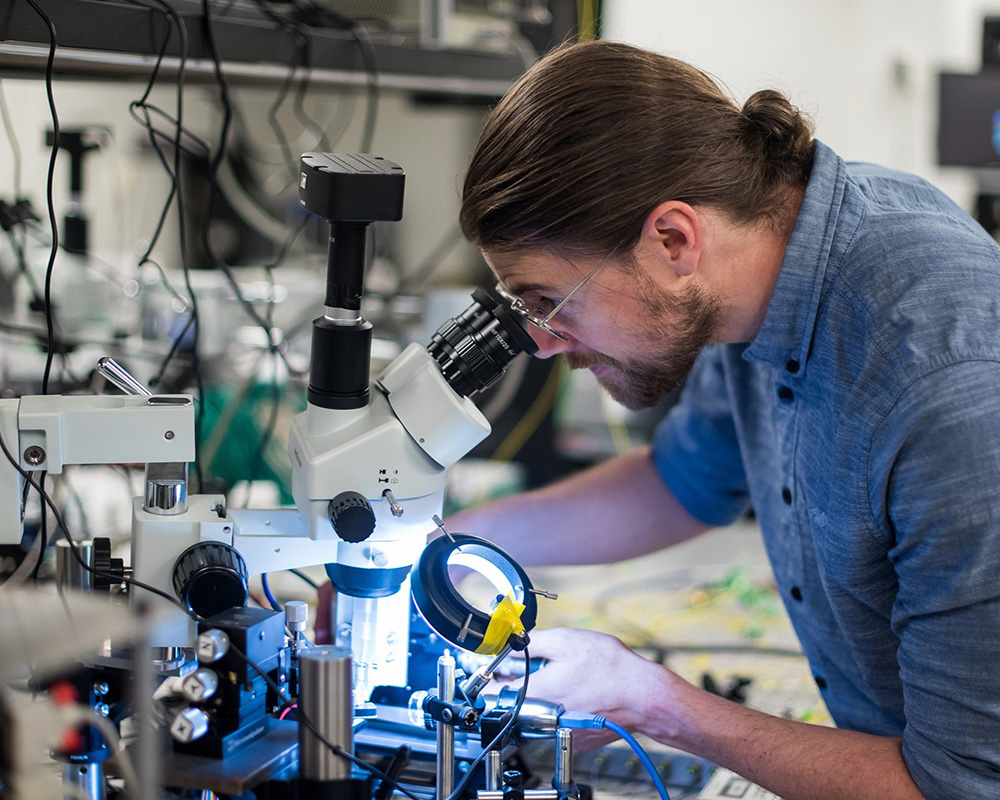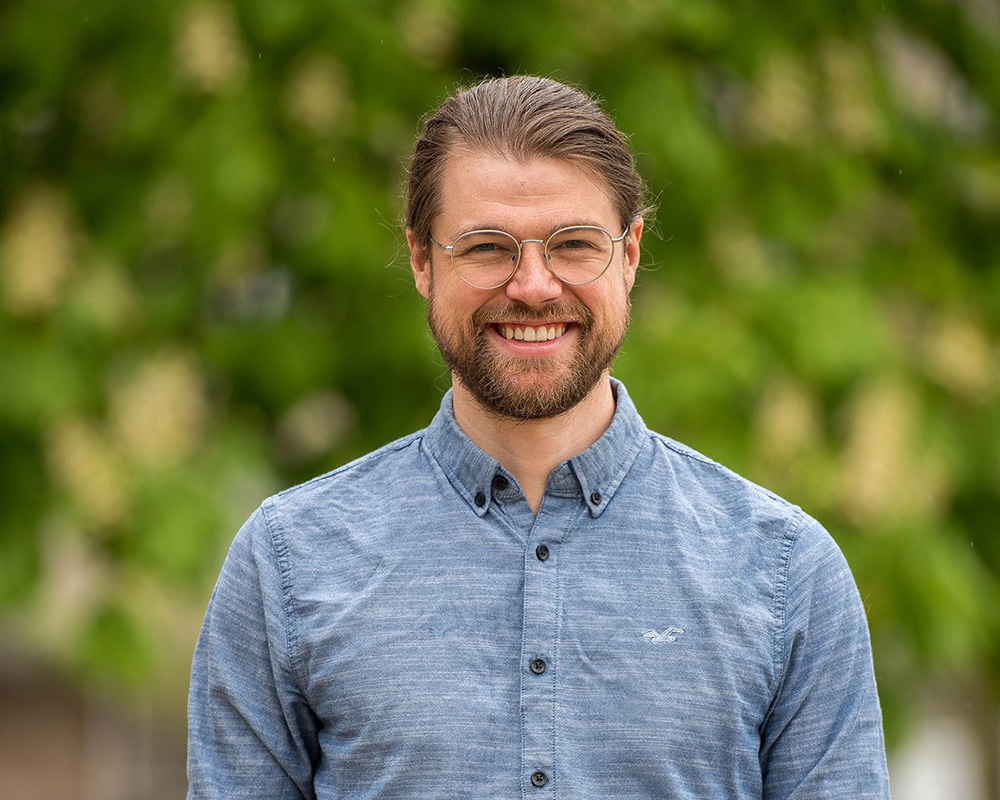As students in the first grade, Alexander Tait and his best friend Owen engaged in an ongoing debate: what’s the difference between an atom and a molecule?
“We didn’t have smartphones back then,” he says with a chuckle, referring to the mid-1990s, “so we were just making stuff up!”
Three decades later, his research as Assistant Professor in the Department of Electrical and Computer Engineering at Queen’s may require for the uninitiated an introductory Google search. Start with the keyword: photonics.
Photonics is the physical science and application of light generation, detection, and manipulation. Growing up in Rochester, New York, Tait wasn’t aware of the emerging branch of physics on which he’d later build a career. Rather, as he puts it, “we were just curious about stuff.” With his buddy Owen, he spent his childhood building things, even if that sometimes meant breaking them first.
“We had this idea for a self-driving car,” he recalls, “so we took a remote-control car and a Tamagotchi.” The Japanese handheld digital ‘pet’ was one of the most popular toys in the late 1990s. “We ripped out the circuit board from the Tamagotchi and attached it to the car,” he says, quickly adding with a laugh, “which makes no sense!”
Tait learned about photonics while studying for his undergraduate degree in Electrical Engineering at Princeton University. By the time he earned a graduate degree at the same institution, he’d moved from the theoretical understanding of photonic integrated circuits to the practical application of them.

“I thought, let’s actually build these things,” he says. “So I went to a clean room and started fabricating devices on a chip. But it turned out to be very difficult.” Thankfully, technology has advanced dramatically over the last decade, and now he works with companies that fabricate his design and sends back the chips at a nominal fee.
Tait’s collaborations with Canadian institutions began during his PhD study and deepened during post-doctorate work at the National Institute of Standards and Technology (NIST) in Boulder, Colorado. He travelled to Kingston several times to meet with Bhavin Shastri, a friend and collaborator who is an Assistant Professor of Engineering Physics here at Queen’s. “I also met maybe half a dozen undergrads,” he says, “and thought to myself, ‘Wow, these undergrads are so advanced and have really good ideas. They’re making CubeSats and a Mars Rover and things like that.”
Moreover, Tait was interested in moving his research to Canada because he appreciated the research environment here. “There’s a strong sense of teamwork and collaboration in Canadian photonics, whereas in the U.S. things are a bit more competitive.”
Tait was hired as an Assistant Professor in the Department of Electrical and Computer Engineering last summer. He spent the fall working remotely and moved to Kingston for the Winter term. “You know, I’ve been in Kingston several times,” he says, “but it’s never been in the summer!”
Tait is also excited about exploring what happens when photonic processors are cooled to temperatures near absolute zero. Cryogenic photonics, he says, will allow researchers to understand how the changes in physics due to change in temperature might be “advantageous for making new photonic devices and then new systems.”
Better photonic devices can radically enhance not just computing power but also the way we interact with technology. Tait is eager to research more about topics such as neuromorphic computing and the role photonics can play in combating issues that traditional processors are unable to address. To that end, he’s ready to build a new lab from scratch.
“The lab will have capabilities to pursue various kinds of projects, and we’ll be hiring graduate students to work on the research.”
